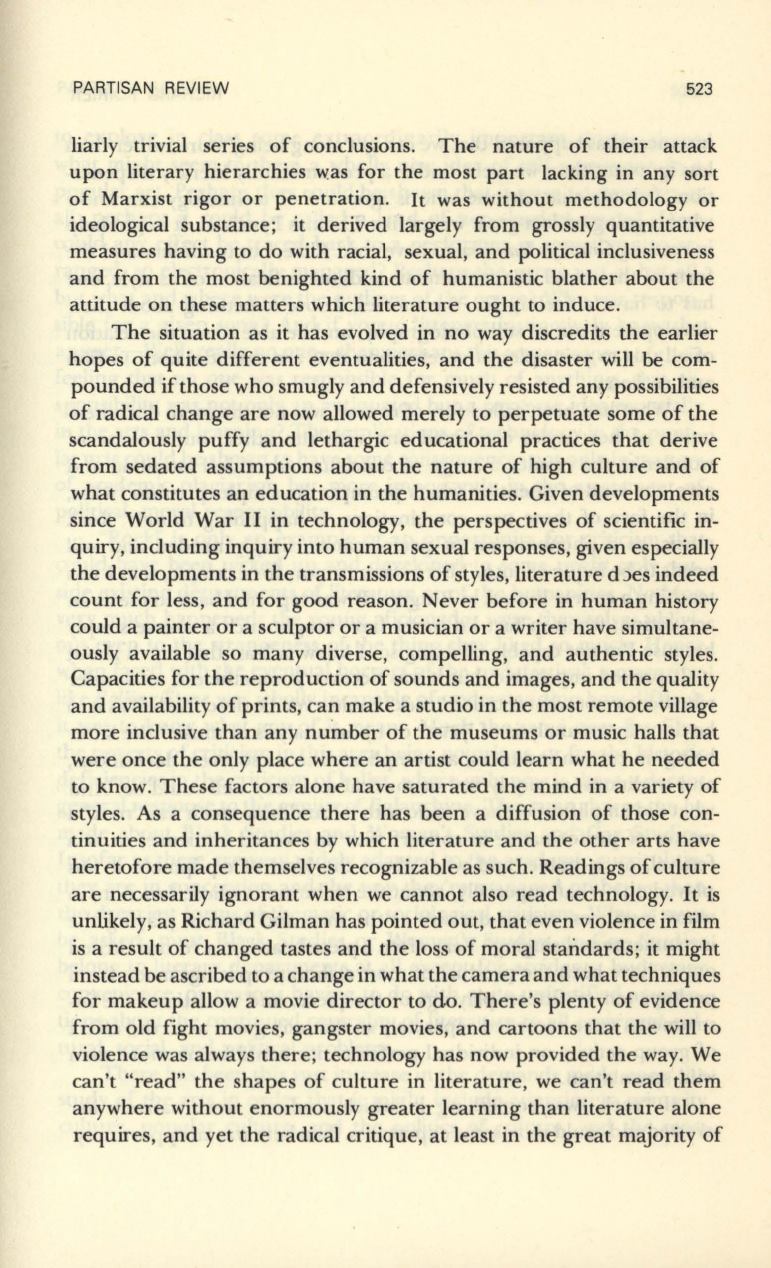
PARTISAN REVIEW
523
liarly trivial series of conclusions. The nature of their attack
upon literary hierarchies was for the most part lacking in any sort
of Marxist rigor or penetration.
It
was without methodology or
ideological substance; it derived largely from grossly quantitative
measures having to do with racial, sexual, and political inclusiveness
and from the most benighted kind of humanistic blather about the
attitude on these matters which literature ought to induce.
The situation as it has evolved in no way discredits the earlier
hopes of quite different eventualities, and the disaster will be com–
pounded if those who smugly and defensively resisted any possibilities
of radical change are now allowed merely
to
perpetuate some of the
scandalously puffy and lethargic educational practices that derive
from sedated assumptions about the nature of high culture and of
what constitutes an education in the humanities. Given developments
since World War II in technology, the perspectives of scientific in–
quiry, including inquiry into human sexual responses, given especially
the developments in the transmissions of styles, literature d .)es indeed
count for less, and for good reason. Never before in human history
could a painter or a sculptor or a musician or a writer have simultane–
ously available so many diverse, compelling, and authentic styles.
Capacities for the reproduction of sounds and images, and the quality
and availability of prints, can make a studio in the most remote village
more inclusive than any number of the museums or music halls that
were once the only place where an artist could learn what he needed
to know. These factors alone have saturated the mind in a variety of
styles. As a consequence there has been a diffusion of those con–
tinuities and inheritances by which literature and the other arts have
heretofore made themselves recognizable as such. Readings of culture
are necessarily ignorant when we cannot also read technology.
It
is
unlikely, as Richard Gilman has pointed out, that even violence in film
is a result of changed tastes and the loss of moral standards; it might
instead be ascribed to a change in what the camera and what techniques
for makeup allow a movie director to do. There's plenty of evidence
from old fight movies, gangster movies, and cartoons that the will to
violence was always there; technology has now provided the way. We
can't "read" the shapes of culture in literature, we can't read them
anywhere without enormously greater learning than literature alone
requires, and yet the radical critique, at least in the great majority of


